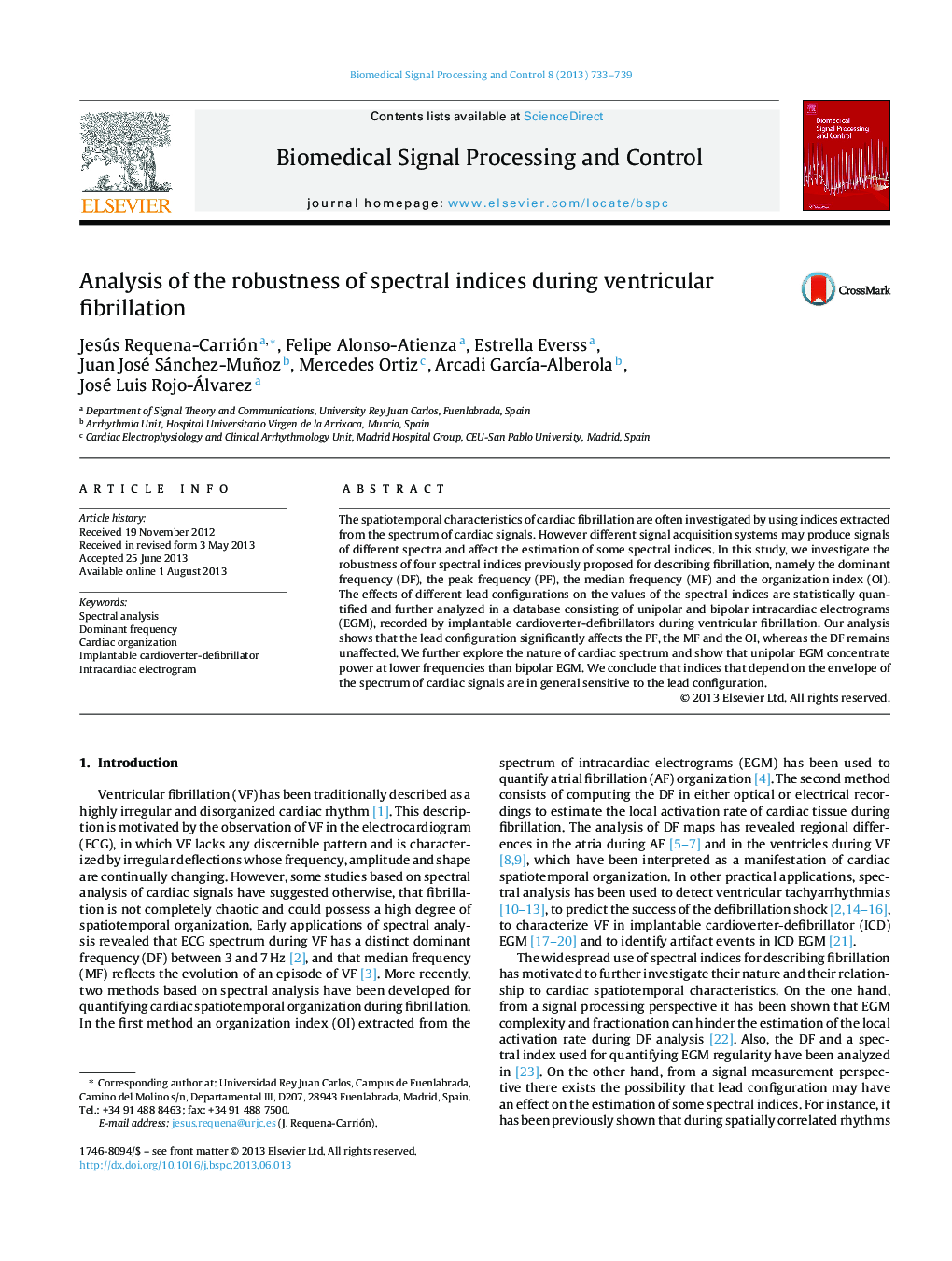| Article ID | Journal | Published Year | Pages | File Type |
|---|---|---|---|---|
| 10368436 | Biomedical Signal Processing and Control | 2013 | 7 Pages |
Abstract
The spatiotemporal characteristics of cardiac fibrillation are often investigated by using indices extracted from the spectrum of cardiac signals. However different signal acquisition systems may produce signals of different spectra and affect the estimation of some spectral indices. In this study, we investigate the robustness of four spectral indices previously proposed for describing fibrillation, namely the dominant frequency (DF), the peak frequency (PF), the median frequency (MF) and the organization index (OI). The effects of different lead configurations on the values of the spectral indices are statistically quantified and further analyzed in a database consisting of unipolar and bipolar intracardiac electrograms (EGM), recorded by implantable cardioverter-defibrillators during ventricular fibrillation. Our analysis shows that the lead configuration significantly affects the PF, the MF and the OI, whereas the DF remains unaffected. We further explore the nature of cardiac spectrum and show that unipolar EGM concentrate power at lower frequencies than bipolar EGM. We conclude that indices that depend on the envelope of the spectrum of cardiac signals are in general sensitive to the lead configuration.
Keywords
Related Topics
Physical Sciences and Engineering
Computer Science
Signal Processing
Authors
Jesús Requena-Carrión, Felipe Alonso-Atienza, Estrella Everss, Juan José Sánchez-Muñoz, Mercedes Ortiz, Arcadi GarcÃa-Alberola, José Luis Rojo-Álvarez,
